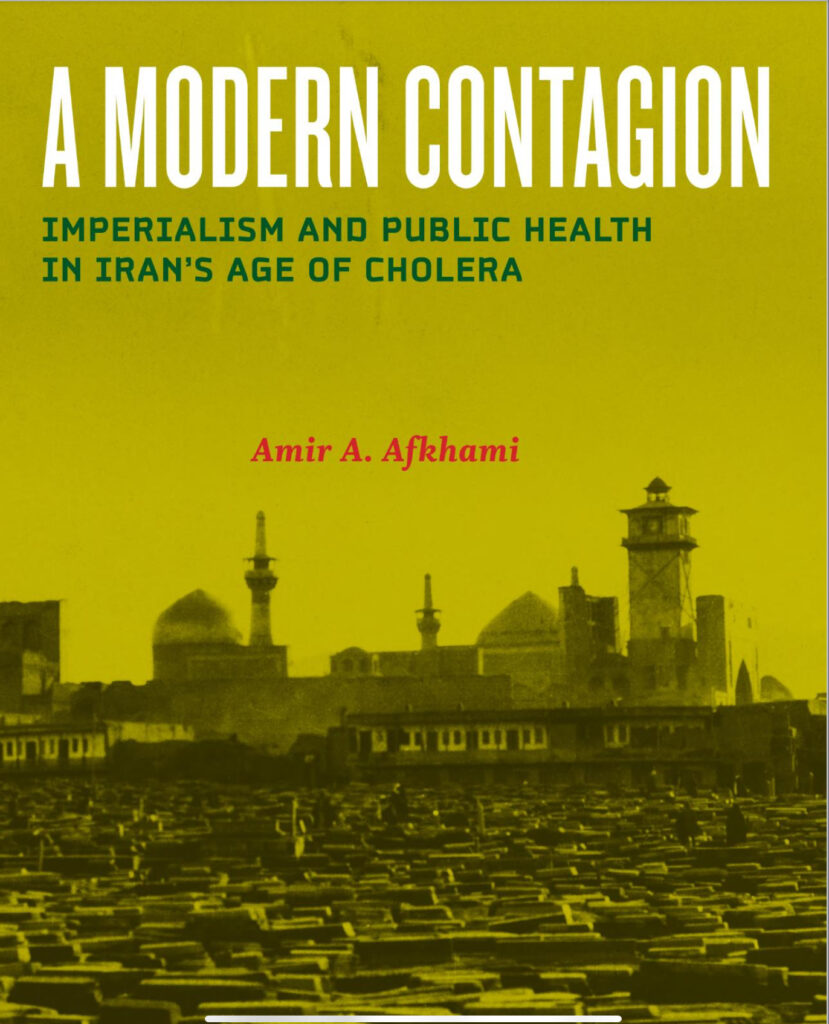Gertrude Bell’s early letters from her twenties reflect a carefree young woman immersed in a world of social engagements and family activities. Well-versed in modern literature, she had grown up among many of the very authors she read.[1] She, a fashionable English lady, moved effortlessly through circles of tycoons and diplomats, guided by a lighthearted yet ever-curious intellect. Gertrude Bell’s early letters from her twenties reflect a carefree young woman immersed in a world of social engagements and family activities. Gertrude was no stranger to travel, but this visit to Tehran would forever change her life.
Diplomatic Service
Gertrude’s uncle, by way of his marriage to Dame Florence’s sister Mary, Frank Lascelles had entered diplomatic service as a young man. His diplomatic path bypassed university education—a path not uncommon among the aristocracy of his time. Diplomatic service was at the time restricted to those of the aristocracy. During the Franco-Prussian War, Lascelles was stationed in Paris during the Prussian occupation of the city. His other diplomatic posts up to that point included Cairo and Sofia during the Serbo-Bulgarian War. Between Sofia and Bucharest, Lascelles was experienced on Britain’s diplomatic frontline against Russia. (Lascelles would be assigned as a diplomat to Russia following his assignment within Tehran.) In 1892, Mary Lascelles, their daughter Florence, and Gertrude Bell traveled overland by way of Constantinople to join Frank in Tehran. The scent of roses and the songs of nightingales welcomed Gertrude to Tehran.
6 Months in Persia
“The East looks to itself; it knows nothing of the Greater World, of which you are a citizen, asks nothing of you and your civilization” – Gertrude Bell. Persian Pictures (1894)
The tapestry of Tehran fascinated Bell; her descriptions ranged from squalid streets to bustling bazaars where shopping was a social art to the beauty of its public gardens. She had been fascinated by Tehran, saying it was “a place I always wanted to go before her arrival there.[2]”
The women’s arrival coincided with the commemoration of Ashura, the 10th day of Muharram, the first month of the Islamic calendar—a day of mourning for Imam Hussein ibn Ali, grandson of the Prophet Muhammad. Imam Hussein was martyred alongside his family at the Battle of Karbala, and over thirteen centuries later, he remains a symbol of resistance to oppression and tyranny. In Persian Pictures, Bell reflected that one need not share the faith to be profoundly moved by the human tragedy and its enduring legacy.[3]

Persian Pictures details Gertrude Bell’s visit to a “Tower of Silence,” a Zoroastrian funerary structure for the dead. These towers, also known as dakhmas, were built to protect the sacred earth from the pollution of decaying bodies. The deceased were laid atop these roofless structures, where carrion birds—typically vultures—would remove the flesh from their bones. While this method may seem shocking to the Western world, it is an ancient and deeply spiritual practice. When Alexander the Great reached Bactria, his Macedonian army was appalled by a similar local custom of exposing the dead to be devoured by dogs. Islam, like the Western world, also condemned such practices. The Tower of Silence that Bell visited was in Yazd, the historic center of Zoroastrianism in Iran. The use of dakhmas was officially banned in Iran in 1970.
A Life Altered
“Are we the same people I wonder when all our surroundings, associations, and acquaintances are changed?”[3]
Gertrude’s letters from this period reveal a subtle but noticeable shift in tone—one that Dame Florence highlighted in her notes. From a surviving letter it seems, the sheer vastness of the world she was now fully immersed in seems to have truly struck her. The desert, both desolate and teeming with life, pulled her in. Tehran itself had felt stuffy, yet Persia enthralled her. She was captivated by the grace and hospitality of her Persian hosts, awed by their warmth and refinement. She recounts lying in a hammock, reading the Poems of Hafiz—works she would later translate and publish in 1896.[3]
There was loss as well, even then. A cholera epidemic hit Tehran in 1892. The Muharram observance in July had called the devout into the city, a city without the modern sanitation system capable of handling its own population much less many more. Unlike the 1889 outbreak, which spared the city’s water supply, the 1892 epidemic infiltrated Tehran’s drinking water, resulting in a significant health crisis. By the disease’s August peak seven hundred people died a day, eventually killing ten percent of the city population.[5] Gertrude was apart of the fortunate twenty percent of the population who could retire to the mountains.[6]
Bell documented the rapid progression of the disease, noting that individuals who appeared healthy one day could succumb to cholera the next. She observed that people continued consuming contaminated water and spoiled food, which contributed to the sudden onset of the illness, but she likely knew little firsthand of the caravans of dead or mass graves. From beginning until end, the outbreak lasted six weeks. The epidemic led to significant social disruptions. Trade to include food had halted as merchants avoided the city, medical practitioners who remained ceased operations, and incidents of theft increased. The disease affected individuals across all social strata, irrespective of religion or class. This indiscriminate impact did not incite internal conflicts; instead, there was a notable rise in anti-Western (to include Russia) sentiment amongst the Persian populace, a sentiment that Bell keenly perceived during her stay.
“Religious fervor grew apace under the influence of fear. . . . The air was full of rumors. It was whispered that the mullahs were working upon native fanaticism, and pointing to the presence of Europeans as a primary cause of evil (the Cholera)which must be straightway removed.”[7]

Yet even amidst the specter of disease and death, life for Gertrude carried on. For her, Persia was not only a land of tragedy but also one of discovery—of culture, adventure, and, unexpectedly, love. Tehran Legation’s First Secretary, Henry Cadogan, held a politically significant post for the empire, though his influence in Persia was waning.
Gertrude and Henry—if that was how she addressed him in person—spent hours riding together. They fished, toured gardens, attended races, and participated in social events, often alongside her cousins and others from the embassy community. Yet, beyond these outings, they shared a deeper bond—a love for poetry, literature, and Persian culture. Letters discovered long after her death reveal that he read to her from Arabian Nights and the poetry of Hafez. When Cadogan proposed, she gladly accepted.[8]
“Thy love is not thy love if not thine own, and so it is not, if it once be known”.[9]
But when Gertrude wrote to her parents seeking permission to marry, she was rebuffed and ordered to return home. Cadogan, though an aristocrat, was of low standing and known for accumulating gambling debts. If she married him, her wealth would become his. In December 1892, she returned to Britain, hopeful that she could persuade her father in person. Likely she would have succeeded in time. Gertrude Bell was nothing if not persistent. However, fate had other plans. In late August 1893, Henry Cadogan died in Iran’s Lar Valley at the age of 34, succumbing to pneumonia after falling through ice while fishing. His ghost would haunt her for the rest of her life—not as a specter, but as the memory of a love lost too soon, a future forever unwritten.
Additionally, Persia itself left a lasting mark on her. From that moment on, she was no longer merely a spectator in foreign lands. Something in Persia had stirred her soul—an awakening that would shape the course of her life and pull her, again and again, toward the deserts, mountains, and people of the East.
Highlighted further readings:
Afkhami , Amir Arsalan. A Modern Contagion: Imperialism and public health in Iran’s age of cholera. Baltimore: Johns Hopkins University Press, 2019. 72.

Footnotes:
[1] The Brown Book: The Lady Margaret Hall Chronicle 1924-1927. 57.
[2] Bell, Gertrude and Florence Bell. “Red Barns, July 22, 1892 ”. Letter. In The Letters of Gertrude Bell. Vol. 1, 1927. https://gutenberg.net.au/ebooks04/0400341h.html. (Note this date is likely a misprint)
[3] Bell, Gertrude Lowthian. Persian Pictures: A book of travel. London: Richard Bentley and Son, 1894. 53.
[4] Bell, Gertrude and Florence Bell. “Gulahek, June 18, 1892 ”. Letter. In The Letters of Gertrude Bell.
[5] Amir Arsalan Afkhami. A modern contagion: Imperialism and public health in Iran’s age of cholera. Baltimore: Johns Hopkins University Press, 2019. 72.
[6] Afkhami. A modern contagion: Imperialism and public health in Iran’s age of cholera. 68-69.
[7]Persian Pictures: A book of travel. 77.
[8] Earlier Letters of Gertrude Bell of Arabia, Elsa Richmond, ed. (New York: Liveright, 1937)
[9] Bell. Persian Pictures: A book of travel. 28.